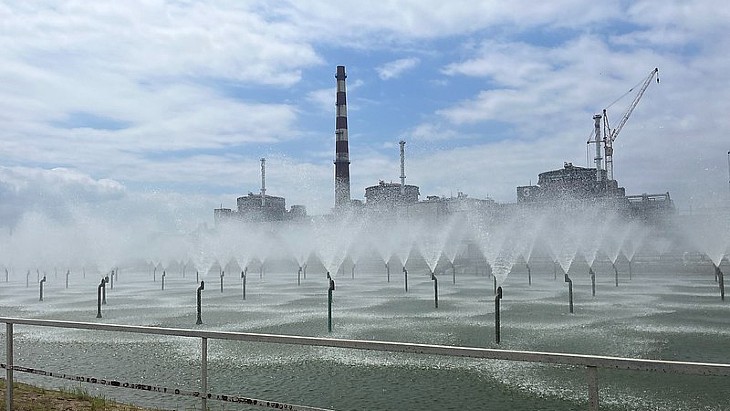
According to the latest update on the situation from IAEA Director General Rafael Mariano Grossi, no alternative date has yet been provided. IAEA teams have previously had access to the roofs of reactors 2, 3 and 4, but not the three other units.
He said that the agency's team at the site, which has been under Russian military control since early March 2022, also had a request to visit the north-western part of unit 5's turbine hall rejected, adding that there has been no access to the north-western part of any of the six turbine halls since mid-October. They are also waiting to be able to see the maintenance plan for 2024.
In the past week the team have visited the reactor hall and electrical safety system rooms of unit 3 and the main control room of unit 5, and visited the site's 750kV electrical switchyard, the on-site water treatment facility, the cooling pond and towers, inlet and outlet channels. They have reported continuing to hear explosions outside of the site, which is on the frontline of Russian and Ukrainian forces.
The six unit nuclear power plant has one unit - unit 4 - in hot shutdown to produce steam and heat for safety and other functions at the plant and the associated town of Energodar where most of the staff live. The IAEA has in the past urged alternative methods to provide the heat and steam required, so that all six reactors could be in cold shutdown.
In Thursday's update Grossi said that four new mobile diesel boilers were being installed to generate additional steam in addition to nine mobile boilers which are already on site and being used to provide heating.
Grossi said: "Nuclear power plants need significant amounts of steam to conduct important operational activities at the sites. This remains the case also for the Zaporizhzhia nuclear power plant, even though it has not produced electricity for well over a year now. The IAEA has encouraged the plant to install diesel boilers for this purpose and we welcome the planned additional capacity."
For access to external power the site currently relies on the one functioning 750 kV power line and one back-up 330 kV line. There have been eight times during the conflict where the plant has had to reply on emergency diesel boilers after losing access to external power.
The IAEA said that it had also completed the 33rd delivery of nuclear safety and security equipment to Ukraine, using contributions from Australia, and the agency reported that teams at the country's other nuclear energy plants - Rivne, Khmelnitsky, South Ukraine - and the Chernobyl site, said "nuclear safety and security is being maintained despite challenging circumstances".